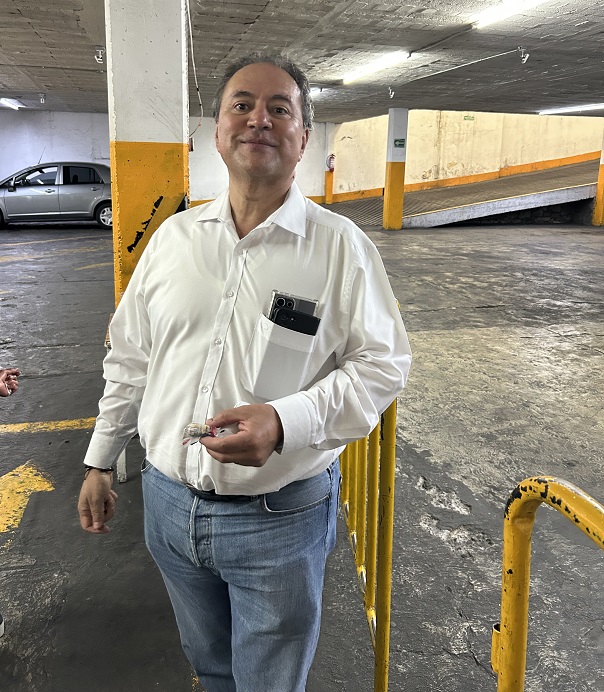
In the morning, we were driven back to Los Mochis, where we said goodbye to Juan. Blanca caught a flight back to Monterrey (Mexico, not California), where she lives, and we caught a flight to Mexico City. Earlier in the week, Juan had referred us to Horacio, a colleague of his, who served as our tour guide for the time we spent in the city:

Horacio met us at the airport, and like Juan, proved to be a very knowledgeable and entertaining guide. One interesting thing that he pointed out to us on the drive from the airport was the trees. It seems that just about all the trees in Mexico City have black bark:
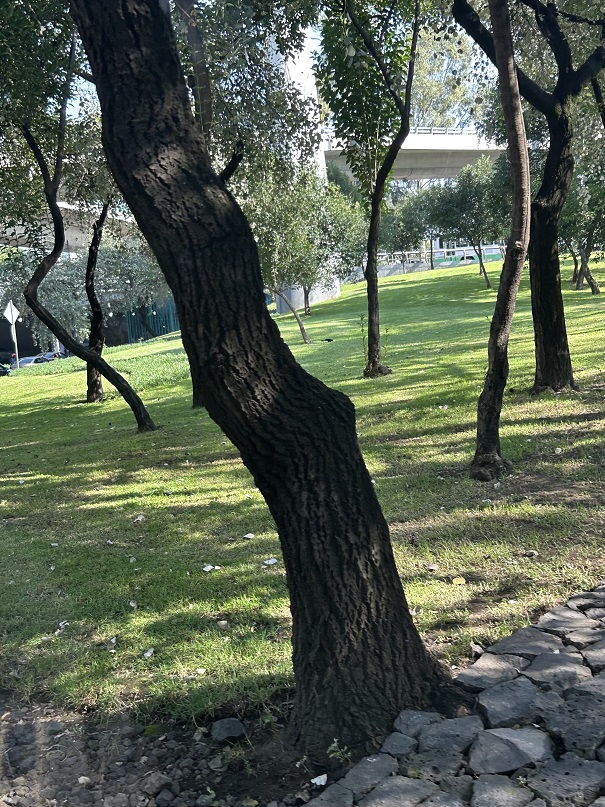
Several trees in a park are covered with bark stained black.
...due to many years of air pollution. Apparently, Mexico City was once one of the most polluted cities in the world, although it has cleaned up considerably in recent years.
After a bathroom break at Horacio's office, we drove to Xochimilco (so-chee-MIL-co). This is an area in the southern part of Mexico City that's famous for its canals. In the days of the Aztecs (1428-1521), much of what is now Mexico City was under water, and Xochimilco was a lake (w). Today, what remains of the lake is a series of interconnected canals.
Here's a map showing the location of Xochimilco:
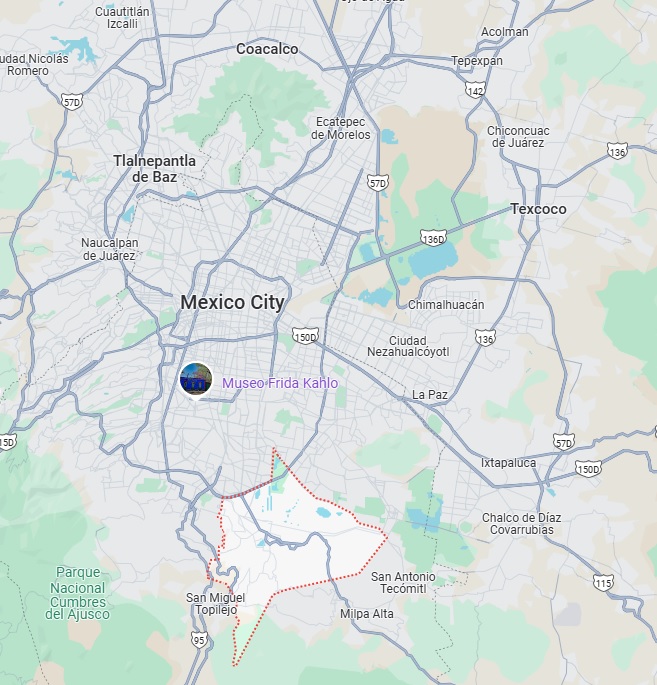
...and here's a closeup map showing some of the canals:
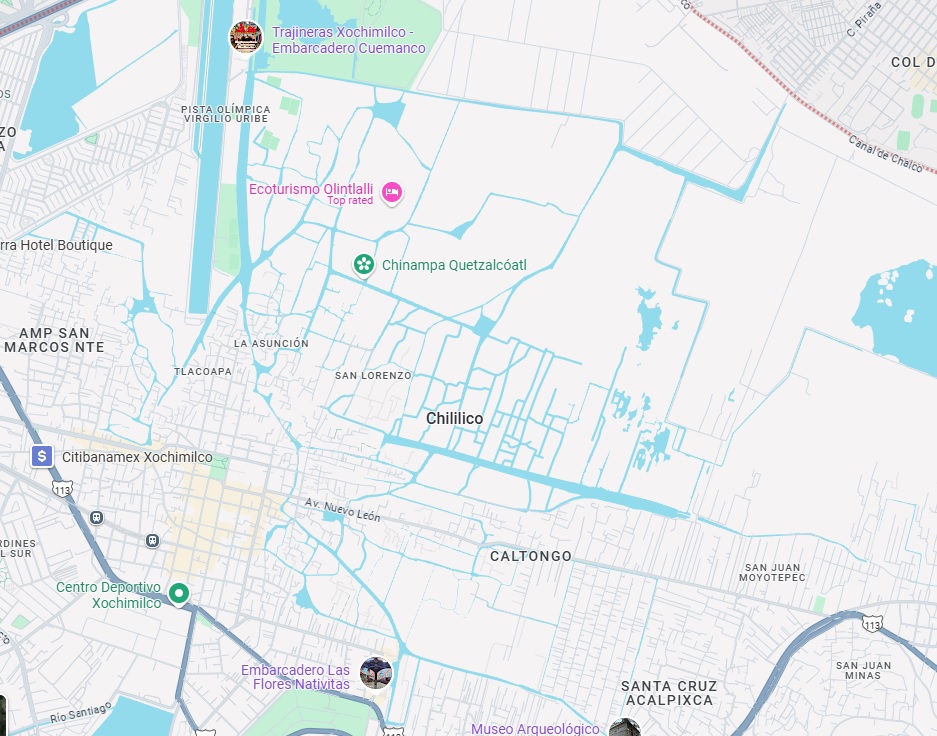
In Xochimilco there are several embarcaderos, or docks, where you can get a ride on a trajinero (gondola) - you can see two of the embarcaderos in that last map. Here's the gondola we rode on:
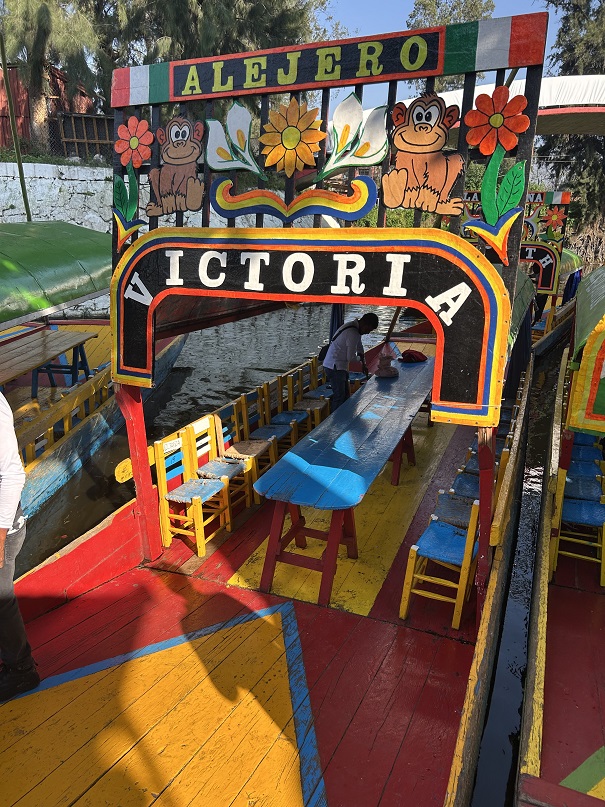
The gondola is a flat bottomed boat painted in bright colors of red, blue and yellow. A long table runs down the middle, there are rows of chairs on either side, and a roof overhead. An archway at the front bears the name "Victoria," above which are cartoon pictures of flowers and monkeys.
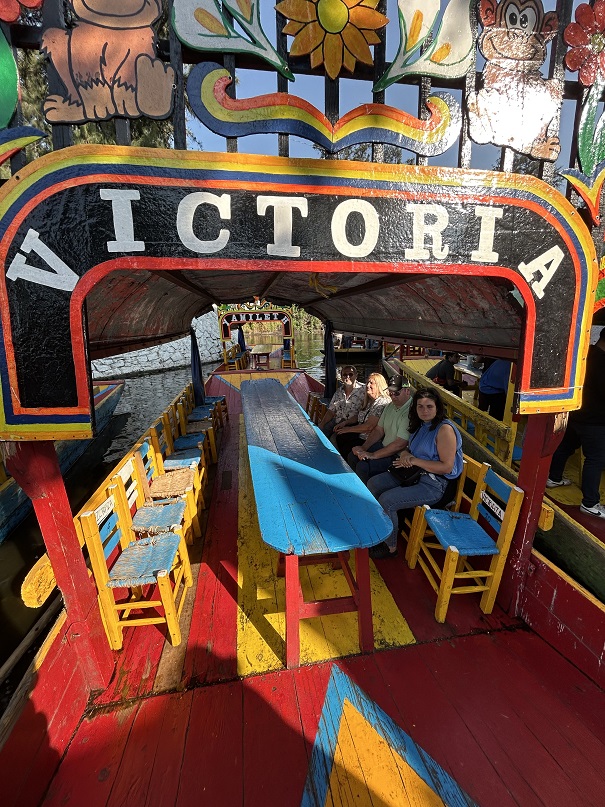
Another picture of the gondola, this time showing the four of us sitting in the chairs on one side.
Like the gondolas in Venice, the trajineros are propelled by poles. This was the gentleman propelling our boat:
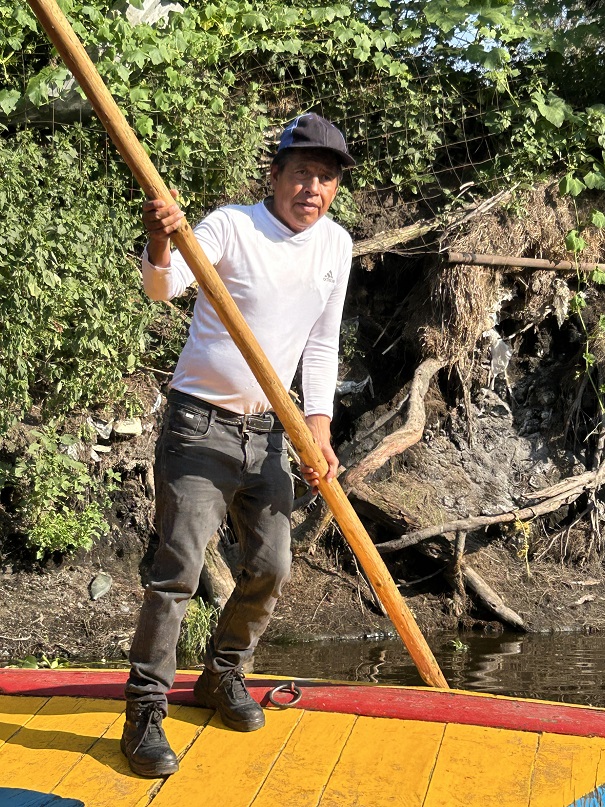
This is a very popular attraction, both for tourists and locals, and particularly on the weekends. It can get very crowded:
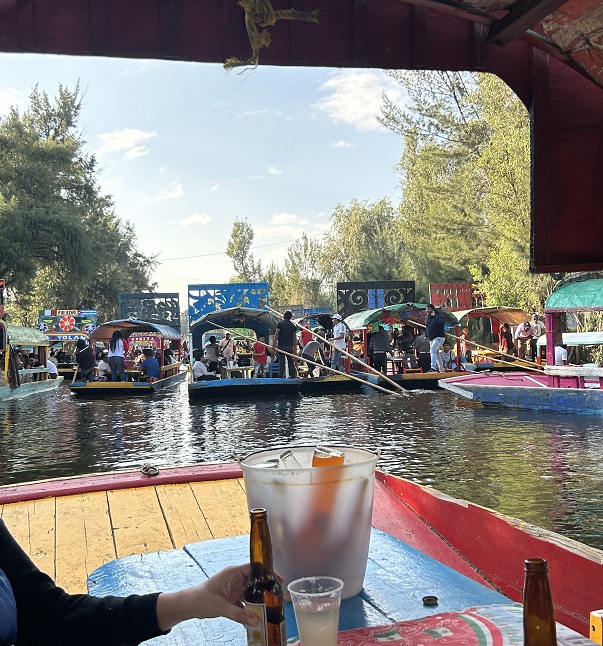
A view looking out the front of the boat shows the way ahead blocked by several other boats.
In addition to the passenger boats, there are many vendors also floating along the canals. For example, this one was selling stuffed animals:
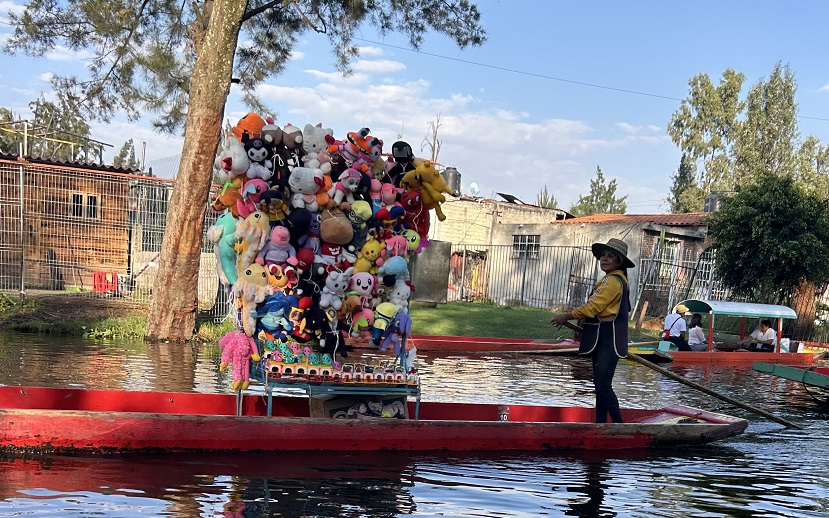
A woman rides a small, narrow gondola with no roof. In the middle is a display of stuffed animals, stacked higher than the woman.
These vendors will pull their gondolas right up alongside yours, and even step over onto your boat to do business. One vendor that we bought from was selling silver jewelry, while others sold drinks - we got margaritas (Coke for me) - and food - we got what they called quesadillas, but were more like what we would call tacos.
There are also floating musicians, like this mariachi band:
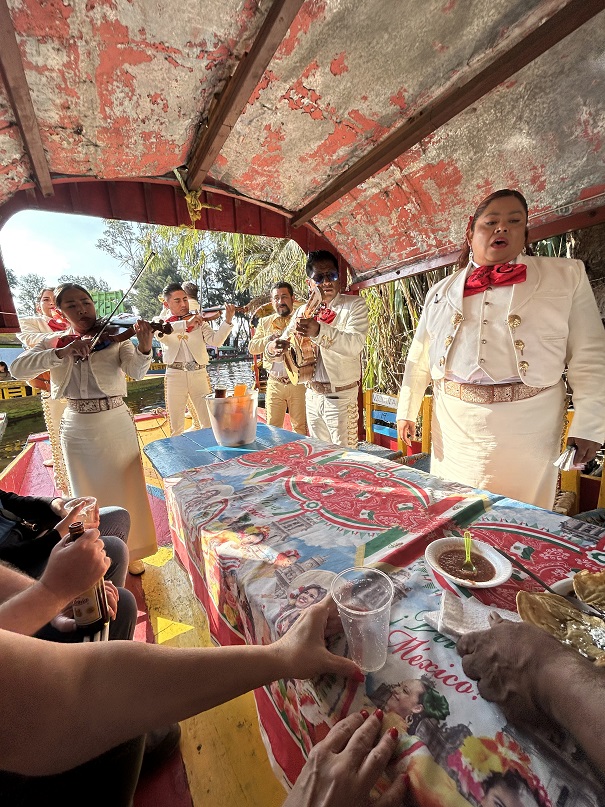
The musicians perform standing at the front of our gondola. There are two trumpeters, two violinists, one man playing an instrument similar to a guitar, but smaller, and a woman singer. They are all dressed in cream colored outfits with gold buttons and bright red neck scarves.
...and this guitar trio:
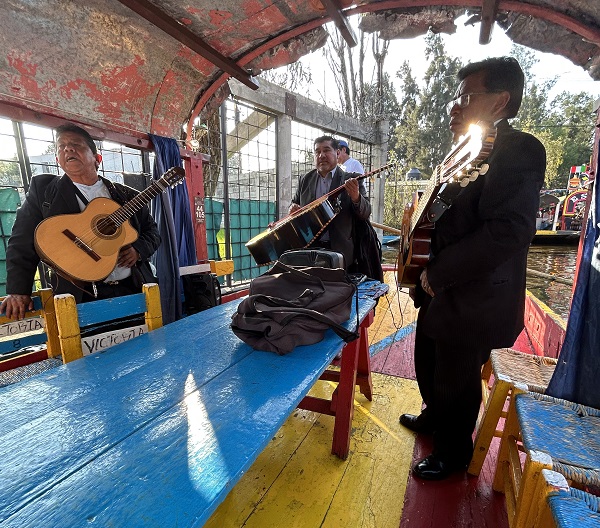
Three men in black suits. Two play nylon string guitars, while the third plays a guitarrón, which is a large Mexican six-string acoustic bass guitar.
There are many islands among the canals, and many of them feature nurseries selling a variety of plants and flowers, like this one:
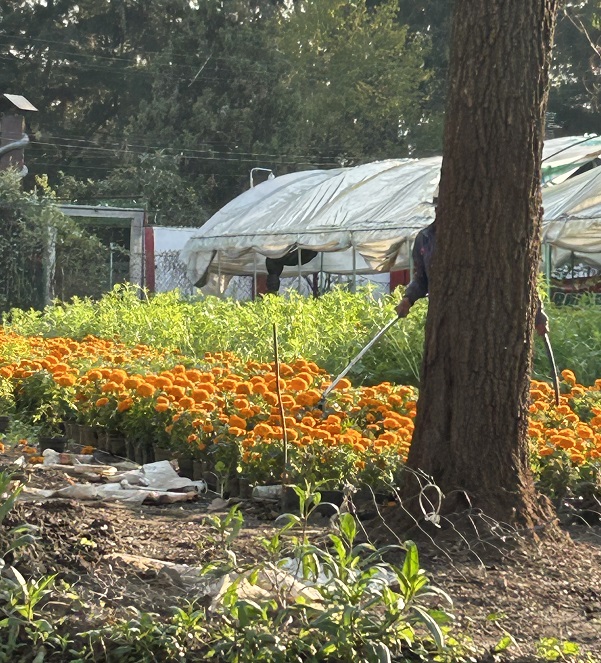
The nursery features a large bed of bright orange flowers.
Those bright orange flowers are a type of marigold known in Mexico as cempasuchil (sem-pa-SOO-chil). These flowers are quite common at the time we were there, because they play an important role in the Dia de los Muertos (Day of the Dead) celebration on November 2nd. To quote from an NPR article:
The fragrance of the bright orange and yellow flowers is said to lead souls from their burial place to their family homes. The cheerful hues also add to the celebratory nature of the holiday, which, although it's wrapped up in death, is not somber but festive.
This was the scene at the embarcadero when we got back. Like I said... very crowded:

Several dozen of the brightly colored gondolas are crowded up to the dock.